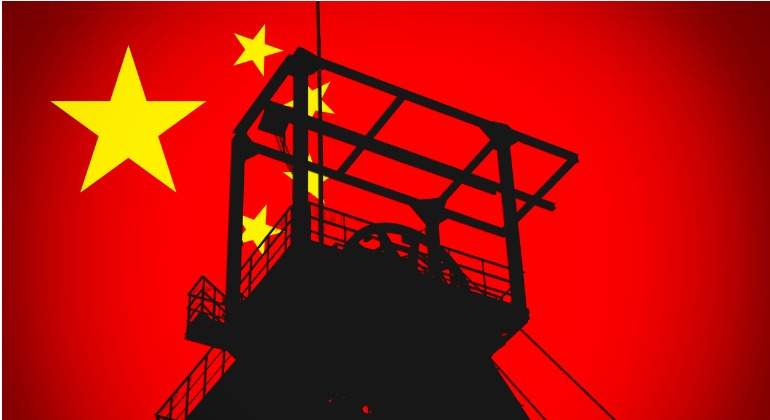The new focus of energy price tensions shifts from gas to coal. China has turned its policy of trying to reduce polluting emissions by ordering a return to the intensive use of coal to alleviate the lack of electricity supply that it suffers in several provinces. Although national production has not been abandoned, in the short term it will not meet the country’s needs. Chinese operators are buying coal on the international market at any price, which is causing rapid growth in coal, and threatens to leave the rest of the countries shivering in the cold for the coming winter.
China will buy coal at ” any price to guarantee heating and power generation in winter, ” the China Electricity Council announced on Monday. Although 90% of the thermal coal used by the country is mined locally, it is not possible to meet current demand in the short term. The use of coal had begun to be limited to reduce polluting emissions, in a new approach to Beijing’s environmental policy.
For this reason, the powerful National Development and Reform Commission (NDRC) has also been launched, the economic planning agency that coordinates all the country’s agencies to quickly achieve clear objectives. The institution has asked local governments to draw on coal reserves to increase production in power plants , and in addition to reinforcing transport through the rail network to ensure supply during the winter season, Reuters reports .
Coal had been practically banished as a source of energy production due to its high polluting impact. But with the world “starving” of energy, many countries have started to look at the “dirty” rock. The need for China further complicates the situation . European coal has risen to a 13-year high and Australian coal has more than tripled over the past year to also hit 2008 highs. While Chinese thermal coal futures on the Zhengzhou Commodity Exchange rose by as much as 3.6% on Wednesday to reach an intraday record for the third consecutive session.
A few months ago, Chinese buyers were on the fringes of the spot market in the international market. Domestic production and, in principle, lower demand in the face of the green shift, Chinese policies left room for the largest consumer of coal on the planet . Now Chinese operators have gone crazy to try to import as much coal and at any price, reports from Bloomberg .
Beijing’s goal is to ease controls on the use of electricity in factories and lower the domestic price of coal with the arrival of foreign ore. Measures are currently being implemented to reduce the use of electricity in factories in 10 regions at the provincial level, including the economic powers of Jiangsu, Guangdong and Zhejiang provinces. Power supply problems have also caused blackouts for some home users in northeast China.
China extracts half the world’s coal, but its own supply has been unable to meet its dizzying demand. Thermal power generation in the year to August is 14% higher than last year, while coal production has increased 4.4%. For their part, imports have increased more than 20% since the beginning of June, but the country still needs more to supply itself.
“Given the shortage of coal in the country, we can expect China to increase its purchasing activity,” says Abhinav Gupta, research analyst at Braemar ACM Shipbroking.
While Europe fights at full speed to increase its gas reserves for the winter. But it will also need thermal coal before the energetic Filomena that is coming. In winter, the production of renewable energy drops, gas prices are expected to reach maximum at that time and on top of that, many countries will have to deal with planned closures of nuclear reactors.
“Asia doesn’t have enough coal,” explains Saad Rahim, chief economist at major commodities trading house Trafigura Group. And that is a serious problem for being the region that supplies the world with coal. India, another major producer, is also depleting its reserves.
And China is buying in other regions threatening the supply for the rest of the countries. China traditionally bought almost all of its coal supplies from Asian producers, but that changed last year when it stopped buying from Australia amid a political dispute. This situation has caused Chinese demand to be satisfied from suppliers from South Asia and Europe. The country has imported 4.4 million tonnes of coal from South Africa so far this year. Between 2015 and 2020 he did not acquire any quantity. Also, imports from Russia, a key supplier to Europe, have doubled so far this year, while deliveries from the United States have increased sevenfold, according to customs data.
In addition, production in Colombia and Indonesia has dropped coal production due to heavy rains, while many mines around the world have closed due to the pandemic. Investment in new mining projects has almost come to a halt in recent years due to the rejection of many countries to use coal.


